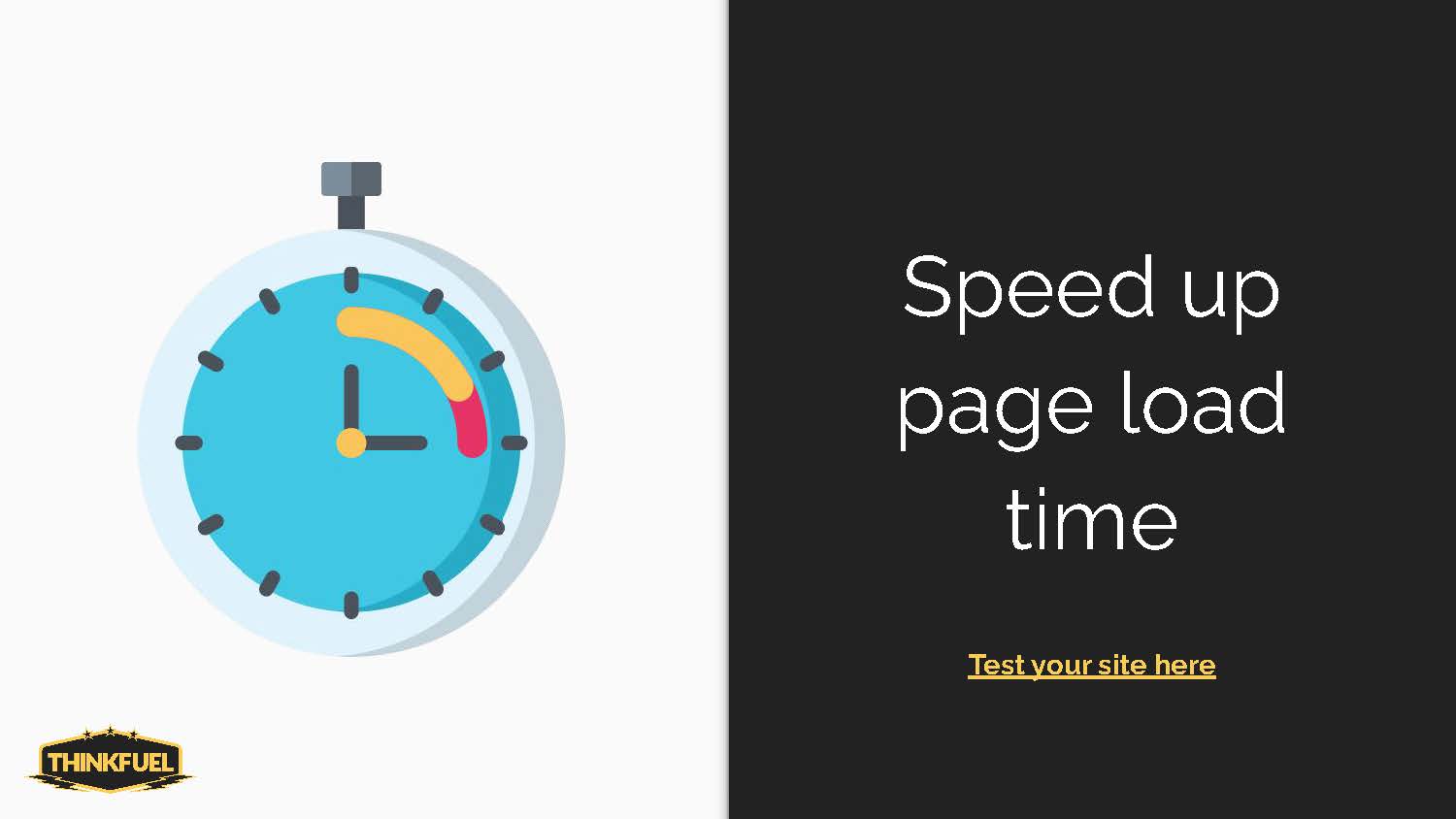How to Improve Your Website's Bounce Rate
Table of contents
- What is Bounce Rate?
- Why Should You Care About Bounce Rate?
- Tips for improving bounce rate
- Benchmark. Monitor. Improve.
- Conclusion
What is Bounce Rate?
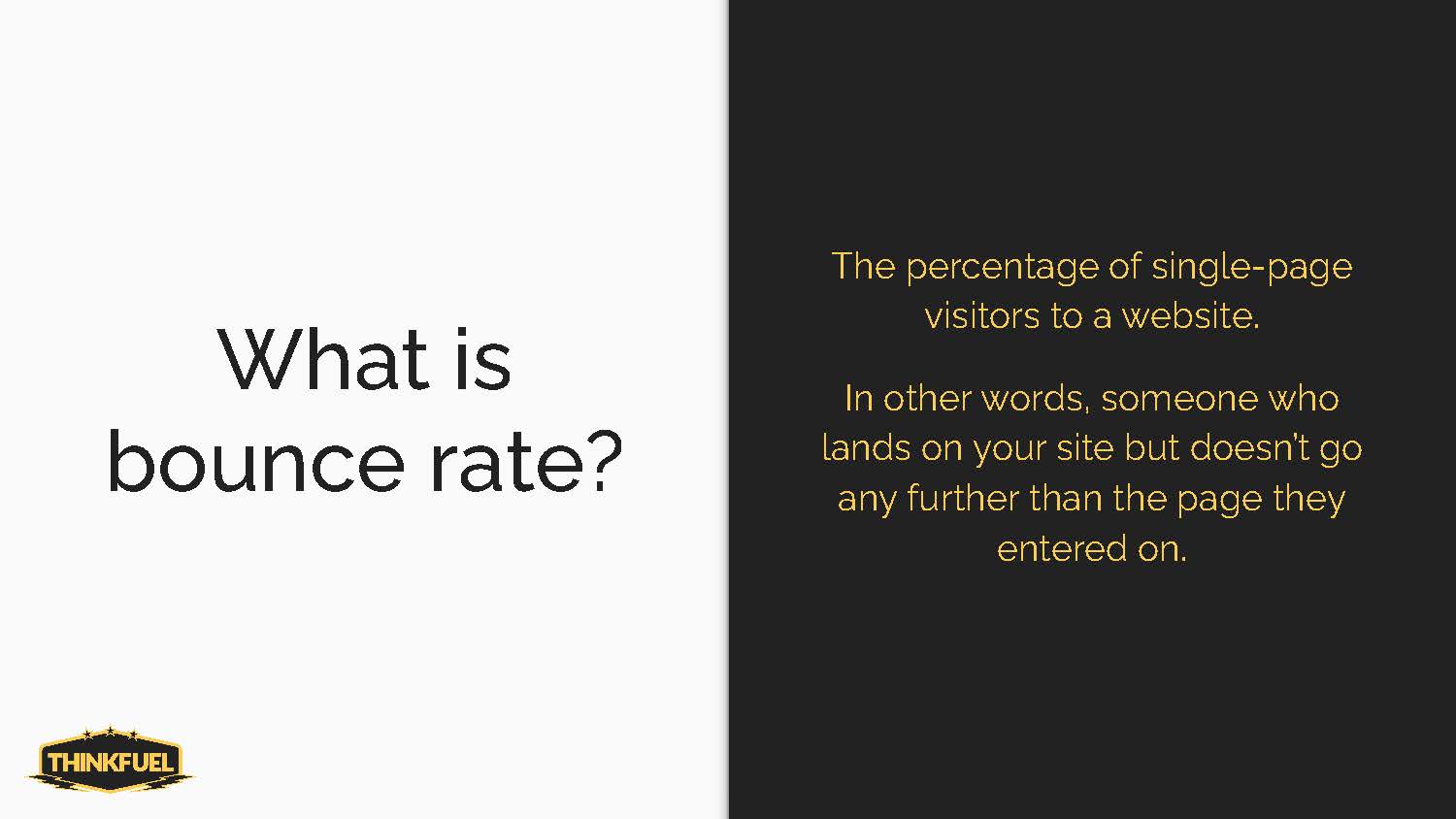
Bounce rate is a metric used to measure the effectiveness of an online page or website. It reflects the percentage of visitors who bounce, or leave the page or website in question without taking any further action, such as clicking a link or exploring other pages on that website.
A bounce can happen for various reasons- from visitors not finding what they are looking for to a slow-loading page resulting in frustration.
Bounce rate is an important metric for marketers and webmasters alike to pay attention to, as it helps them understand how their audience interacts with their content and how their efforts are performing. High bounce rates can indicate something is wrong- from poor user experience, to inadequate content optimization- and should be taken seriously into consideration when attempting to improve website performance. It can also help diagnose technical issues that may affect user engagement and ultimately lead to conversion losses.
Why Should You Care About Bounce Rate?
Improving bounce rate should be a top priority for marketers. A high bounce rate not only results in fewer conversions but it also reflects poorly on the company's brand and image.
Not only that, but it is indicative of any technical issues that the website may have - from slow-loading pages to navigation difficulties - which can all lead to visitors abandoning the website altogether.
For B2B businesses, bounce rate is especially important as it directly impacts how potential customers perceive their business and its services. If potential customers are bouncing away quickly, this could mean they either do not find what they are looking for or they have a negative experience while on the website - both of which need to be addressed in order to improve bounce rate.
For companies looking to increase their conversion rates and create a positive customer experience, bounce rate should be taken seriously and actively monitored. In addition to providing valuable insights on user engagement with content, bounce rate can also provide key information about how well the website is performing technically and how effective certain marketing techniques are for driving traffic.
By improving bounce rate, businesses can ensure visitors have a positive experience while visiting their website- one that could potentially lead to more conversions.
Tips for improving bounce rate
Set realistic goals
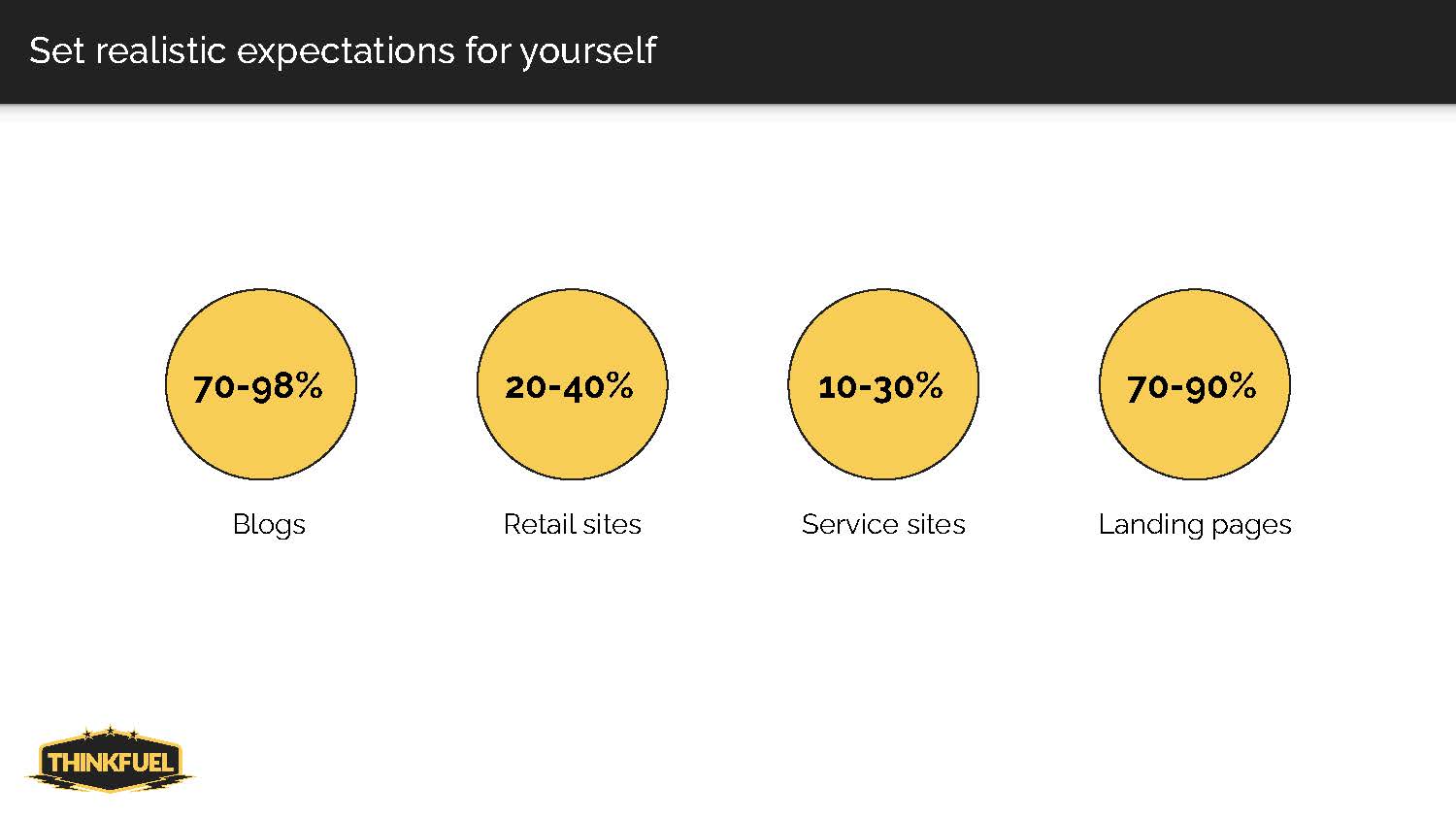
Setting realistic bounce rate goals is an essential step to improving bounce rate and increasing website conversions. Understanding customer behavior on your website is the first step in setting achievable bounce rate targets. Analyzing bounce rate data can help you understand how visitors interact with your content, pages, and overall website experience.
Armed with this knowledge, you can set realistic bounce rate goals that will ensure customer satisfaction while also pushing them further down the sales funnel to convert. Realistic bounce rate goals give you an achievable target that you can work towards and measure progress against. This allows you to focus on the areas of your website that need improvement, as well as track how changes affect bounce rates over time.
Keep these averages in mind when setting your goals:
- Blogs have an average bounce rate of 70-98%
- Retail and e-commerce sites have an average bounce rate of 20-40%
- Service sites have an average bounce rate of 10-30%, and
- Landing pages have an average bounce rate of 70-90%
How to attract the right visitors to your website
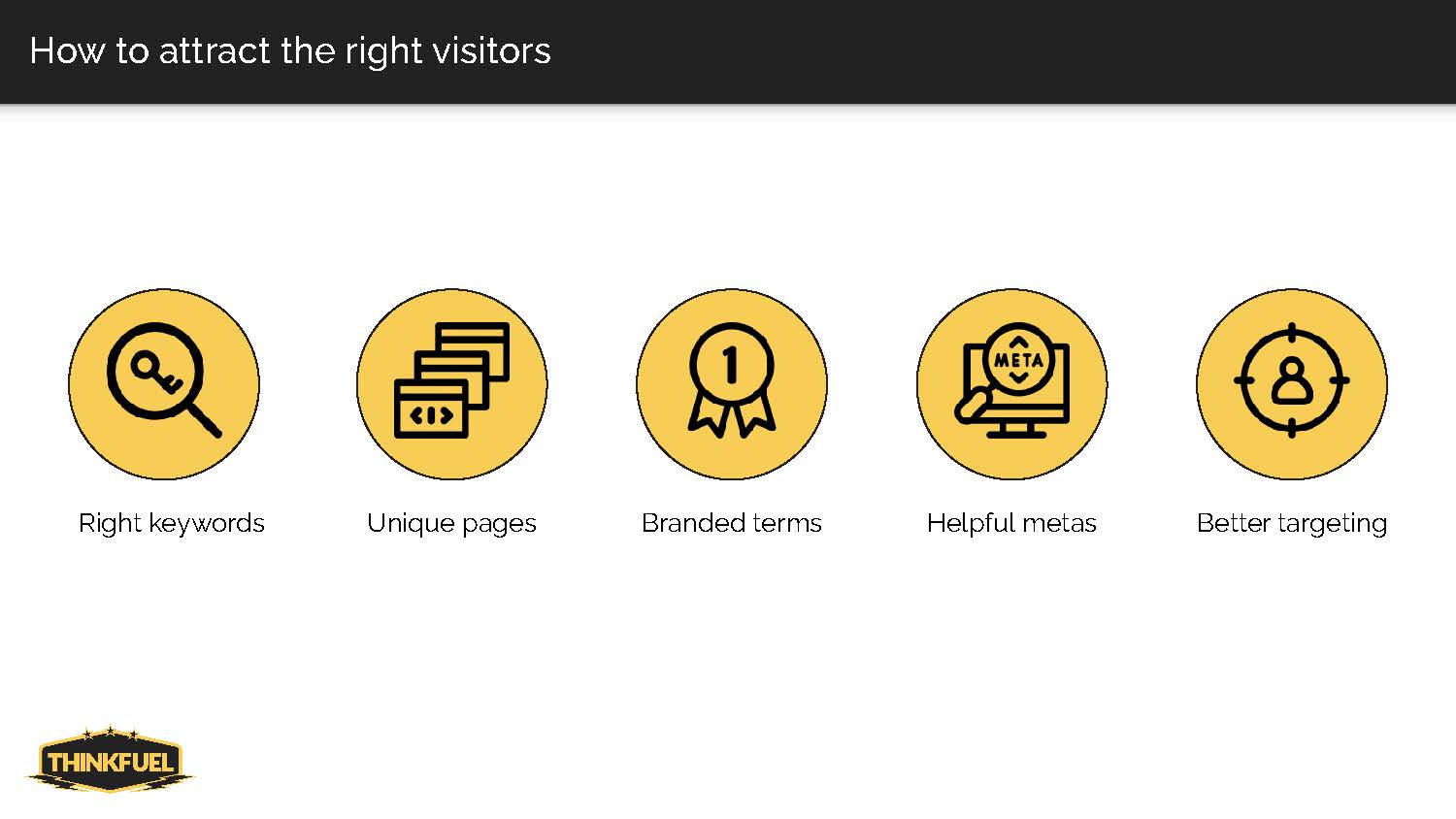
- Keywords: Choose the right keywords to match your ideal audience and your content. Don’t try to appeal to everyone.
- Unique pages: Create multiple versions of your pages to speak to your different audiences/personas and use keywords specific to that audience.
- Branded terms: Be sure to maintain top tier rankings for your own brand.
- Helpful meta descriptions: Be clear and helpful with your meta descriptions so the right people click through and the wrong people don't
- Better targeting: If you’re running ads, improve your audience targeting and make sure the landing page(s) speaks specifically to them.
Make your website text more readable
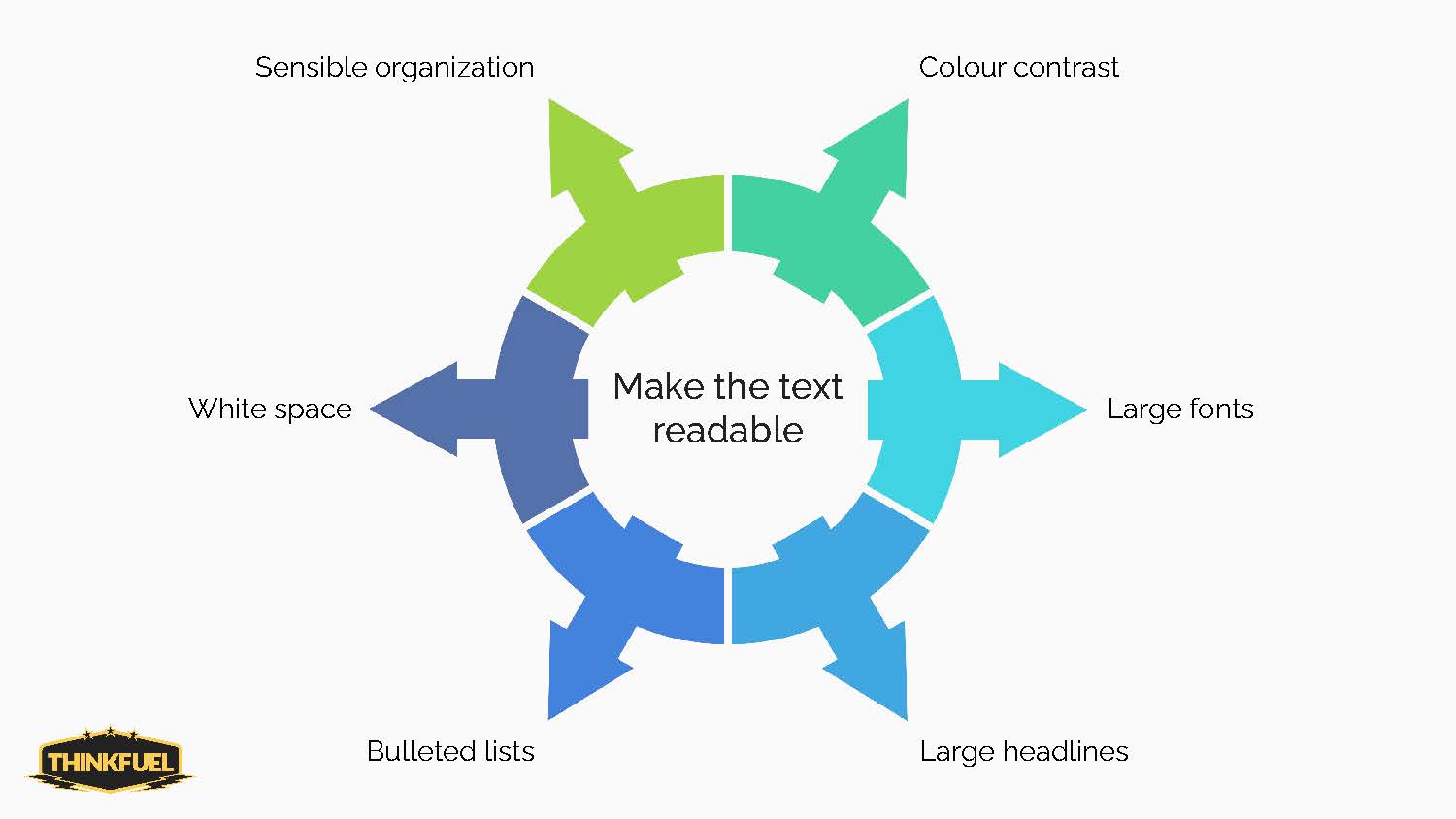
To make the text on your website more readable, use colors that contrast each other, choose fonts that are easy to read and large enough to see, use clear headings for each page or section, break up the text into lists when possible, give some space between different parts of the page, and organize things in a sensible way.
Use a good layout for your pages
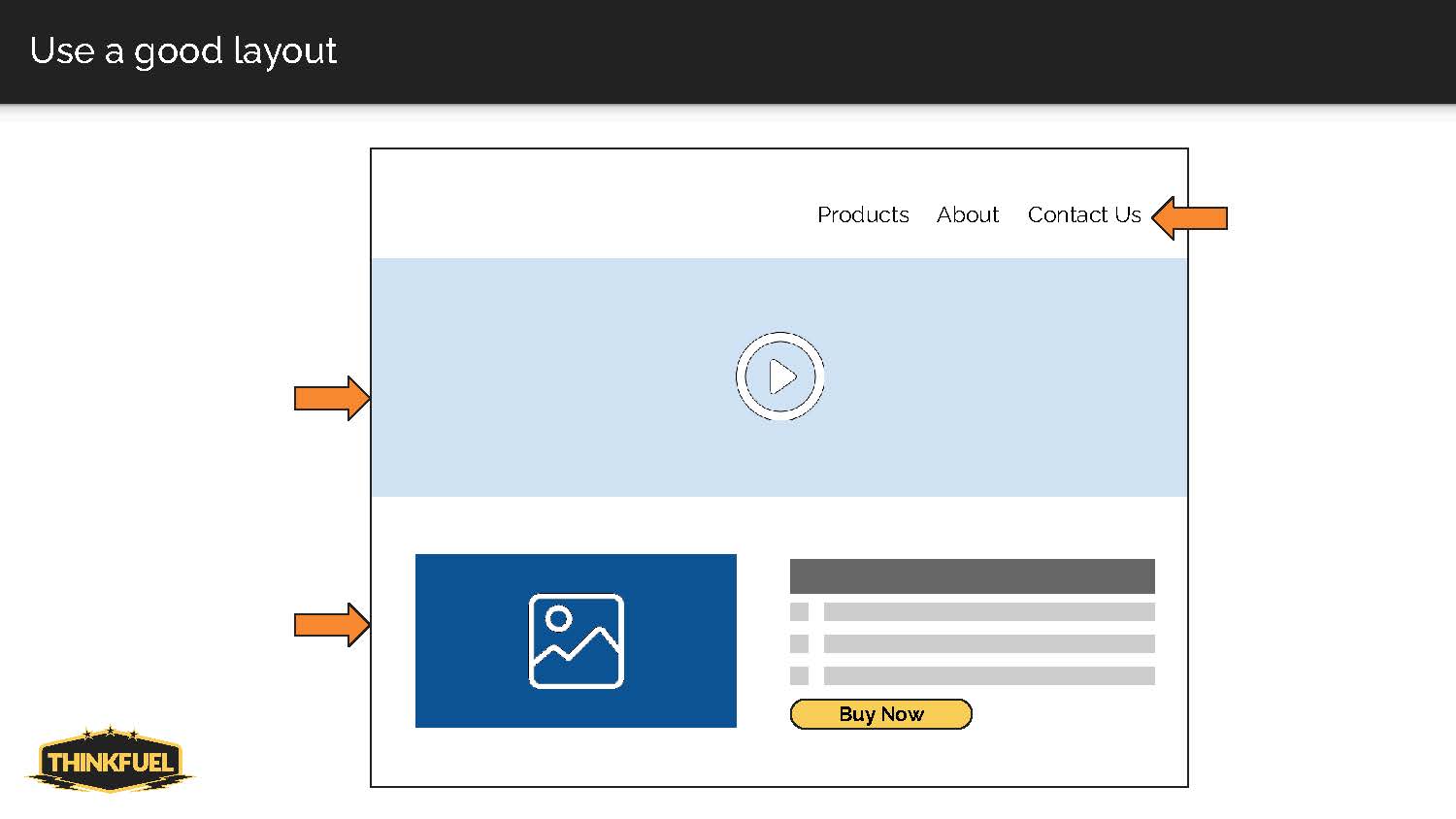
Navigation should be organized in an easy-to-understand format, such as using a top menu bar or side menu design. The menu bar should display the most important categories of the website and a search box should also be available for users who want to find specific information quickly. Every page on the website should provide a link to the homepage and other pages within the site so that users can easily navigate from one page to another.
Organizing content into sections is another critical aspect of a good web page layout. This helps visitors quickly scan for relevant information and makes it easier for them to locate specific topics on your site. Sections should be clearly labeled with headings, subheadings, and images that help enhance readability and engagement.
Content hierarchy is also important when laying out web pages. Rather than cramming all information into one large block of text, it’s better to break down long pieces of content into shorter chunks by using subheadings or bullet points to highlight key points. This makes it easier for readers to quickly scan through the page and find what they are looking for without losing their place in the text.
Ensure your site loads quickly
It’s also essential to ensure that all website elements load quickly and correctly on various devices, browsers, and connection speeds. Slow loading times can turn away potential customers so you will want to optimize images, videos, audio files, etc., in order to reduce loading time as much as possible. Using tools like Google PageSpeed Insights or our website grader can help identify potential sources of slow loading times so you can address them quickly.
Avoid one-page websites
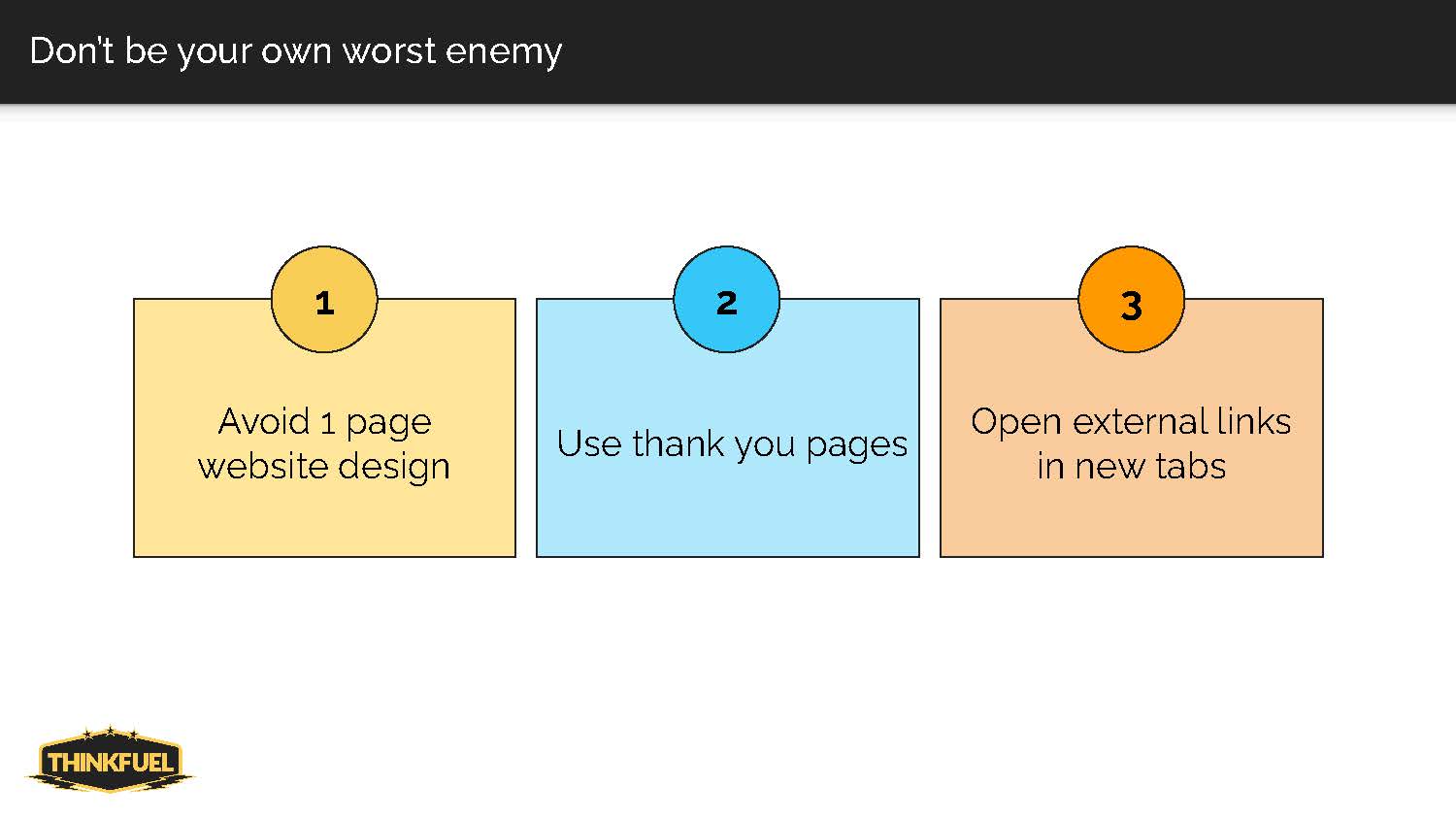
One-page websites are often seen as a great way to get your message across and capture visitors’ attention quickly. However, these types of designs can actually be detrimental to bounce rates.
For starters, one-page websites are usually not optimized for search engine rankings, meaning it may be difficult for potential customers to find your business in the first place. Additionally, because all the content is on one page, it can make it difficult for users to quickly scan through the information and find exactly what they are looking for.
This can lead to a higher bounce rate as users simply click away out of frustration if they cannot easily find what they need.
Furthermore, most one-page websites lack navigation options which makes it difficult for users to explore more of your website.
This could mean they bounce away just after landing on the homepage instead of exploring different pages or sections within your website.
Finally, lengthier content is often too much to fit into a single-page design without making it look cluttered or overwhelming. This means that users have to scroll down an extended length of text in order to view the entire page, which takes up more time than necessary and leads visitors away from other aspects of the website, such as contact info or other product offerings that are located lower down on the page.
In short, while one-page designs can be appealing at first glance due to their simplicity and ease of use, they don’t necessarily provide an optimal user experience and can lead to a higher bounce rate overall due to their lack of optimization and navigational options.
Use Thank You Pages

Redirecting visitors to a separate thank you page after they fill out a form on your website is an important part of ensuring that users remain engaged with your site content and don't bounce away too quickly. This is because it provides an immediate sense of acknowledgement and validation for their actions, which instills trust and encourages further engagement.
When someone fills out a form on your website, instead of just receiving the standard acknowledgment message and being redirected back to the same page they were on before filling out the form, redirecting them to a separate thank you page can be much more effective. On this page, you should thank them for submitting their information and provide them with additional resources or information they may find useful, such as newsletters, blog posts, product pages or other content related to what they’ve just filled out the form for. This helps to keep them engaged for longer by providing them with additional value and potential new paths to explore within your website.
This, in turn, helps reduce bounce rates since users are more likely to stay on your website if they are presented with relevant material that interests them. By providing users with something of value right after they’ve taken action on your site – such as signing up for a newsletter or requesting more information about a product – you’re creating an even stronger connection between the user and the content they have just interacted with. This connection will often encourage further exploration of your site rather than simply clicking away after completing their task.
Another advantage of redirecting people to a thank you page is that it allows you to track user engagement data more accurately. For instance, if someone views the thank you page but doesn’t click through any links or take any other actions afterwards, it could indicate that the material wasn’t quite relevant enough for them or didn’t pique their interest enough in order to take any further action. This data can then be used to tailor content or messages better in order to increase user engagement and reduce bounce rate over time
Open external links in a new tab

Opening external links in a new tab is an essential part of optimizing your bounce rate. By keeping users on your website and providing them with the opportunity to explore other sites without leaving yours, you can keep visitors engaged for longer and reduce bounce rates significantly.
This is because it allows users to access additional content or resources without having to leave the page they are on, which helps increase user engagement and reduces bounce rates.
Use heat mapping tools

Heat mapping tools are a great way to get insight into why users bounce from your website. By monitoring user behavior on your website, you can gain an understanding of which areas of the page they are most attracted to and how long they stay there.
Heat maps provide a visual representation of user activity and can reveal patterns that indicate where visitors may be getting stuck or lost within the website's navigation structure. This information is invaluable for improving bounce rates as it allows businesses to identify potential problems in their website design and make necessary changes in order to create a better overall experience for their users.
Additionally, heat maps also help businesses understand which parts of their content draw more attention than others, allowing them to optimize the placement of key elements such as CTAs (calls-to-action) so that they can drive maximum conversions.
Benchmark. Monitor. Improve.
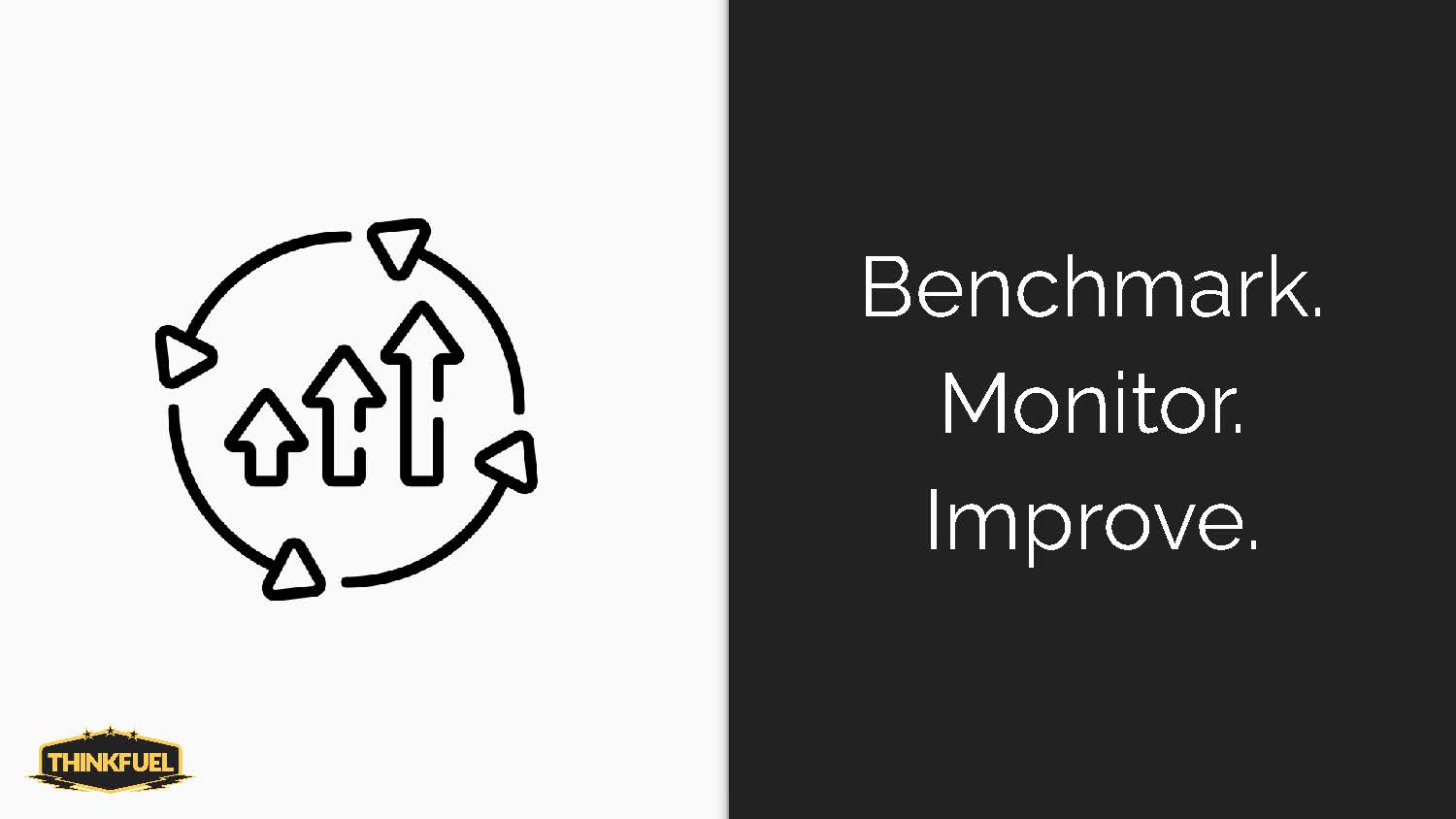
The key to continuously improving bounce rates over time is to make small changes and measure the impact. Start by benchmarking your bounce rate, tracking how many visitors leave your site after a single page view versus those who visit multiple pages. By understanding where your bounce rate stands, you can set a goal for improvement and track progress over time.
Once you’ve identified areas of improvement, make small changes that can help reduce bounce rates, such as optimizing meta descriptions, formatting text for scanning readability or testing out different CTA placements.
Monitor how each of these modifications impact bounce rate over time and improve it further with more tweaks if necessary. Additionally, consider using A/B testing tools to identify the most effective designs or combinations of elements for increasing user engagement on particular pages.
Conclusion
It’s important to always be working on improving your bounce rate as it can have a significant impact on the success of your website.
By understanding user behavior, optimizing web design and making small changes that help reduce bounce rates, you can create an engaging experience for your visitors which will ultimately lead to more conversions and sales.
With the right tools and strategies in place, you can continuously monitor how users interact with your website content so that you can make informed decisions about what works best for increasing engagement levels over time.
Table of contents
Share this
You May Also Like
These Related Stories
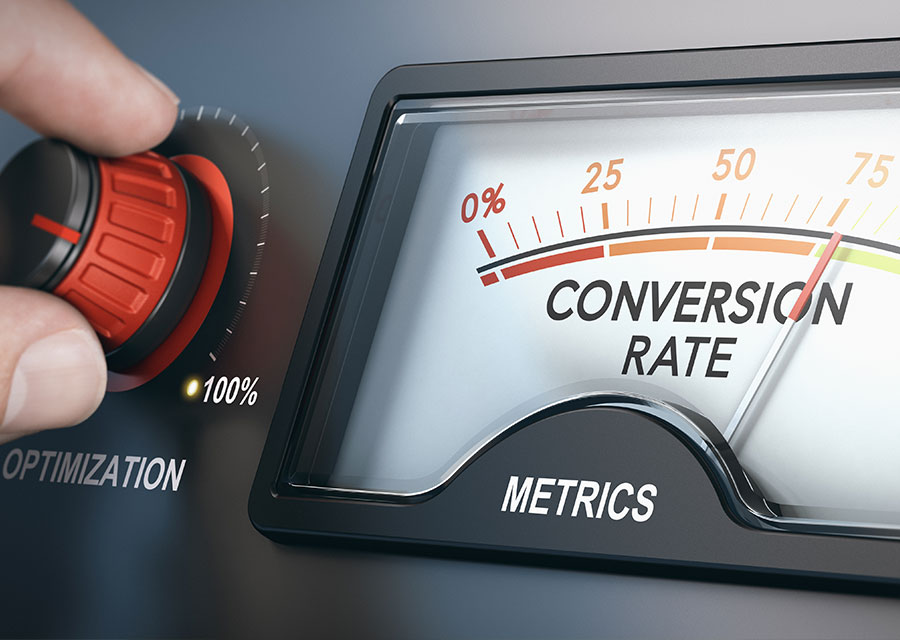
Conversion Rate Optimization - How to Get More Website Leads
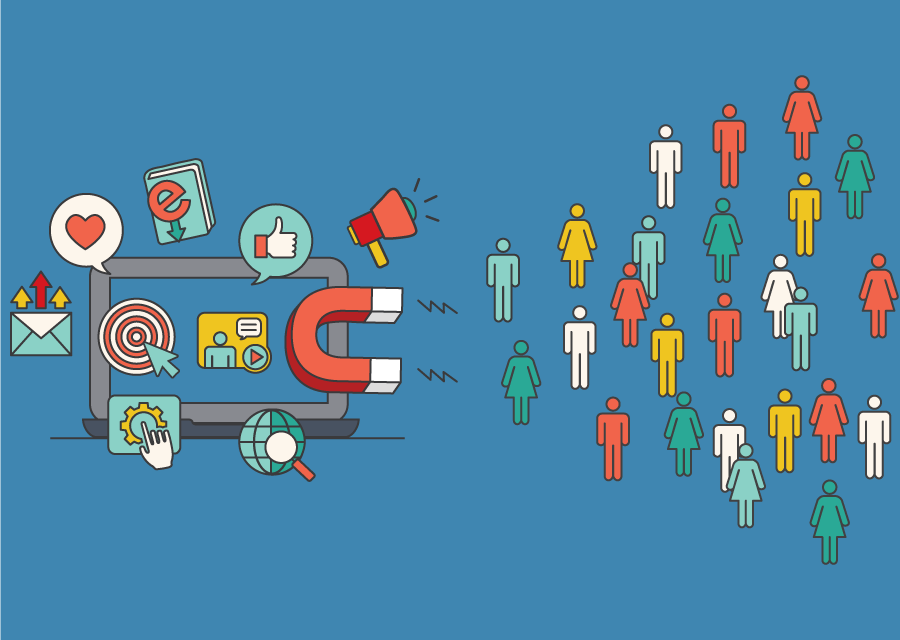
How to Get More Website Leads

